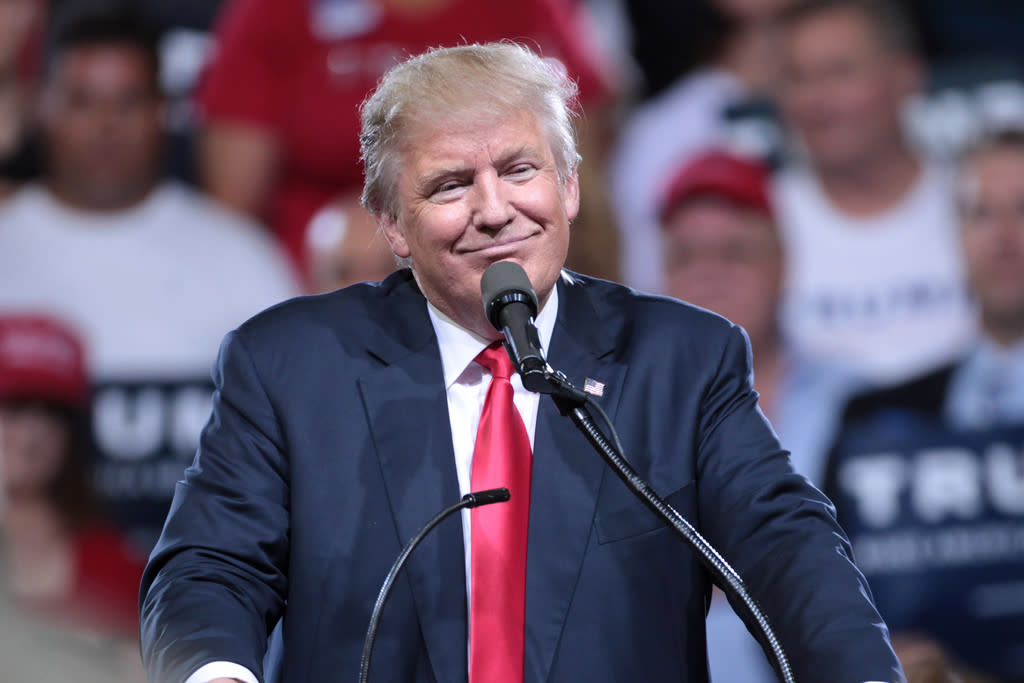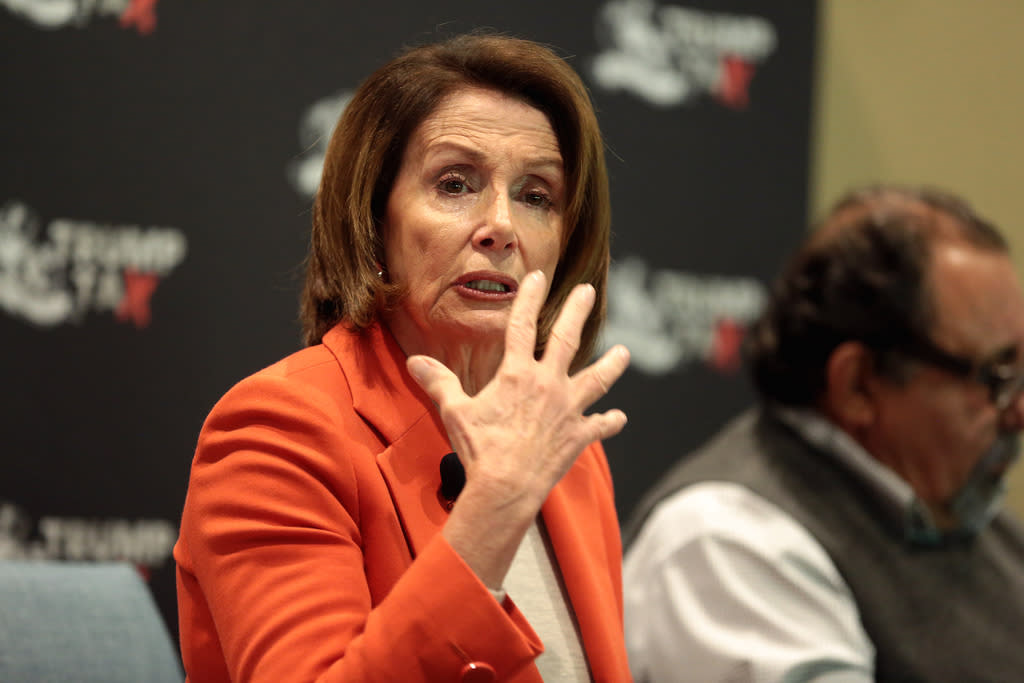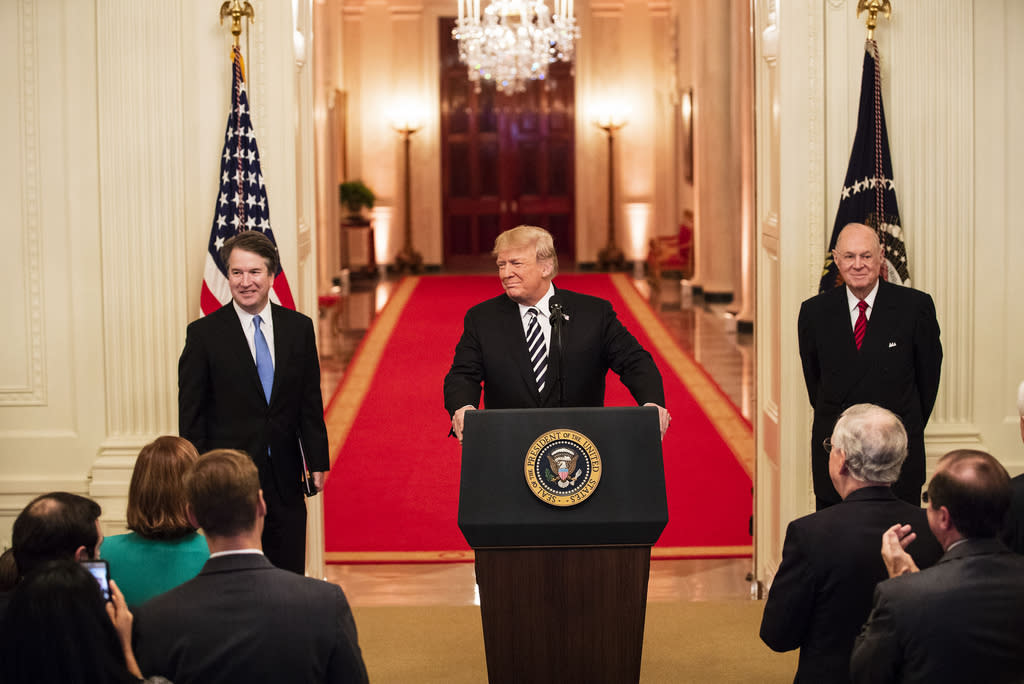US midterm elections: the mess that trails Donald Trump is likely to leave the houses divided
The November 6 midterm elections will serve as a barometer of President Donald Trump’s administration. From his controversial campaign to his unexpected electoral victory and divisive presidency, Trump has split national opinion.
His unpredictable candour and the bevy of scandal surrounding his character have re-emphasised partisanship among both elected officials and the public at large. Consistently, Democratic lawmakers have opposed much of the 45th President’s agenda, whilst most Republicans have stood firm behind him.
Now nearing the halfway point of his first term, although Trump’s job remains secure, the electoral fates of many of his congressional allies are at stake.

Midterm elections serve, in many respects, as a corrective on a president’s agenda. Voters may simply seek to shake a perceived complacent government back into gear.
Alternatively, results can reflect public opinion concerning policy direction, from prevailing sentiments of outrage and disappointment to praise or to ambivalence.
As such, midterm elections typically result in a shift away from the party of the incumbent president and, in so doing, grant greater congressional strength to the opposition party.
In evidence of this trend, just twice since the Second World War has an incumbent president’s party gained seats in the House of Representatives at a midterm election – and just six times in history.
The most recent exception to this rule occurred in 2002, amid the presidency of George W. Bush, when Republicans gained eight House seats to solidify its majority at a time when a strong military response to the 9/11 terrorist attacks remained politically popular.
At the same election, Republicans achieved a net gain of one in the Senate, reversing a razor-thin minority into a 50-49 majority (with one Independent Senator, Jim Jeffords). In each of the three midterm elections since, however, the incumbent president’s party has lost seats in both congressional chambers.
Pollsters and predictors
Understandably, the Republican Party (GOP) is nervous about its chances of retaining the House on November 6. At present, the GOP holds a 45-seat majority (240 seats to 195) in the House. A solid advantage, yet one that could be flipped if just 23 fell to the Democrats.
To put this in perspective, a 23-seat gain is far below the 63 seats gained by Republicans in 2010 or the 54 seats taken by Republicans in 1994, two years, respectively, into the terms of presidents Barack Obama and Bill Clinton.

Opinion polling and an array of election forecasters hint at a likely Democratic victory that would return Minority Leader Nancy Pelosi (right) to the Speaker’s podium. Yet all forecasters, from the analysts at FiveThirtyEight to the academics at the University of Virginia, have allowed themselves some latitude or ‘wiggle room’ in the case that opinion polls and trends defy expectation.
In so doing, pollsters and predictors are hedging their bets to atone for inaccurate prophesising at the 2016 election.
Perhaps more intriguing, yet likely less competitive, is the battle for command of the Senate.
At present, Republicans hold a 51-49 edge; yet, by consequence of a structural intricacy, only a small window of opportunity is available for Democrats to retake the upper chamber.
Enshrined in the US Constitution is the provision of staggered Senate elections, such that “one third [or ‘Class’ of Senators] may be chosen every second year”. Thus, in 2018 just 33 of the 100 seats are due for election (plus two additional ‘special elections’ to fill vacancies in Minnesota and Mississippi).
Additionally, and by consequence of the six-year Senate cycle, the Democrats are significantly disadvantaged in their pursuit of a majority. This Class of Senators last sought re-election in 2012, when President Obama won re-election, and before then in 2006, when Democrats achieved resounding congressional victories as George W. Bush’s popularity waned. Therefore, of the 35 seats up for grabs in 2018, Democrats hold 26.
To achieve a majority, Democrats need a net gain of two seats (as a 50-50 tie would allow Vice President Mike Pence to break deadlocks in favour of the GOP). To do so, they must first retain seats in states that heavily favoured Trump in 2016, including North Dakota and West Virginia, both of which Trump won by more than 35 percentage points.
Beyond this, Democrats must take at least two of the available Republican seats. Making this task yet more difficult is the fact that just one of these seats can be found in a state that has voted for a Democratic presidential candidate thus far this century.
Electoral backlash
Although it very much appears to be an uphill battle for the Democrats to reclaim both chambers, consistently low approval ratings for President Trump, together with divisive policy initiatives and lingering controversies will impact heavily on the minds of voters.
In focus this week are the pet immigration and trade policies launched by the Trump administration, to which Republican legislators across the United States are tied, whether intentionally or merely by consequence of party affiliation.
Consequently, from images of separated families at the Southern border to the uncertainties of trade relations with China, Republican candidates face a high possibility of electoral backlash.

In a similar manner, the bisection of public opinion regarding the confirmation of Justice Brett Kavanaugh (right) to the Supreme Court and the protracted probe into alleged Russian interference at the 2016 presidential election remain fresh in voters’ minds.
The former, in particular, will impact many Senate races, with the potential for at-risk Senators to lose or win support based upon their Kavanaugh vote.
Aside from the issues and electoral mathematics at play, however, one critical factor, above all others, will determine the result on Tuesday: turnout.
Many are predicting that voter turnout could reach an historic high for midterm elections in 2018. This, however, belies the fact that regardless of acute political circumstances, voter turnout at midterm elections is typically 10-20 per cent below that at presidential elections.
No midterm election in the past 100 years has seen a turnout above 50 per cent. Consequently, pivotal to the performance of both parties will be which can more effectively ‘get out the vote’ and which constituents show up.
Ultimately, it appears that a divided Congress, with a Democratic House and a Republican Senate, is likely. Yet in this age of indefinite polling and political unpredictability, nothing is certain.





